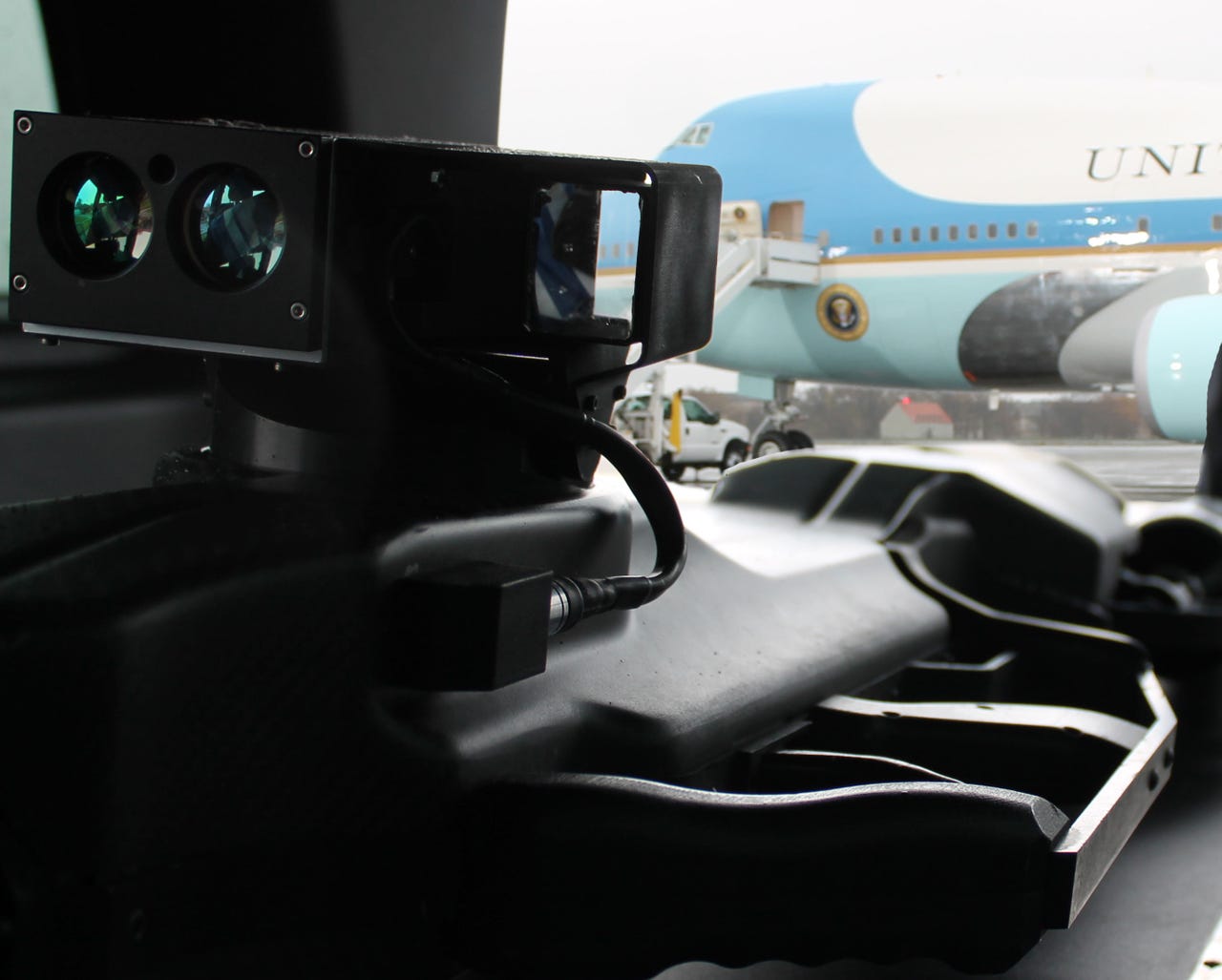Photos: The counter-drone system that's been shielding Obama


Protecting the President
The SkyWall100 counter-drone rocket launcher system was deployed to protect President Barack Obama during the visit he paid German Chancellor Angela Merkel in Berlin last week.
The SkyWall100 drone-interception system was one of a number of counter-measures at the ready in case a drone got too close for comfort. The outgoing president promised he'd be back soon for the Munich Oktoberfest beer festival as an ex-president.
SkyWall100
The SkyWall100 operates like a powerful, high-tech Nerf gun, only with the single purpose of taking down small drones like the one that crashed on the White House lawn, or the flag-bearing drone that started a riot at a soccer match in Belgrade.
Handheld launcher
The handheld rocket launcher fires a projectile loaded with a net that releases as it approaches the target drone.
It's been developed by UK firm OpenWorks Engineering and marketed as a non-military anti-drone technology to counter civil drone threats. It's also meant to be cheaper than military-grade anti-drone tech.
Small drones beware
OpenWorks says the projectile and net can capture any small drone with dimensions of up to 4ft (1.2m) wide, which is significantly larger than estimates of Amazon's 55lb (25kg) Prime Air drones.
Wired estimated the Amazon drone has a base of nearly 3ft (88cm). To put that in context, DJI's professional-grade Inspire 2 drone has an 18-inch (60cm) width.
Hovering or moving
The SmartScope sight calculates the launch angle and muzzle velocity needed to reach the drone, which can be captured whether hovering or moving.
SkyWall's SmartScope
The user is constantly updated on whether the SmartScope laser is approaching a lock on the target drone.
It automatically makes vertical adjustments to account for range, while calculating lateral motion to allow the user to lead a moving target. Once it locks on the target, it will beep and flash a green light, indicating that it's ready to launch.
Tiny onboard computer
The SkyWall100 is the smallest in the OpenWorks range of three anti-drone launchers. The laser-equipped sight, or SmartScope, feeds data to a tiny onboard computer. The handheld launcher is just over 4ft (1.3m) long and weighs 22lb (10kg), which includes the projectile's payload.
Gravity and moving targets
Before firing, the SmartScope makes the operator adjust the aim to compensate for gravity's effects on the projectile.
The computer also calculates the lead time for a moving target, while the projectile itself is also updated with flight data to control the release of the net and parachute.
Compressed gas propulsion
So what happens once the trigger is pulled? "At this point compressed gas is released onto the back of the projectile," says OpenWorks.
"When the operator pulls the trigger, the data is stored on the projectile control circuitry and the mechanisms holding the projectile are released."
The projectile
It takes about eight seconds for the operator to reload each projectile. They have a line-of-sight range of about 330ft (100m).
The projectile comes in four forms: with a net alone, with a net and parachute, with a net and electronic counter-measures, and as a training projectile.
The net capture
The basic projectile, the SP10, carries a large net that is configured by the SmartScope. According to OpenWorks, it offers a "very high confidence level" that a drone can be captured.
Bringing down the drone
So what if the falling drone lands on a crowd? Is there a safer way of bringing the target back to earth?
OpenWorks says its more advanced projectile, the SP40, also carries a parachute to control the landing. This measure can also help preserve the drone for later forensic examination. The SP40 is also configured to launch the parachute if it fails to capture the drone.